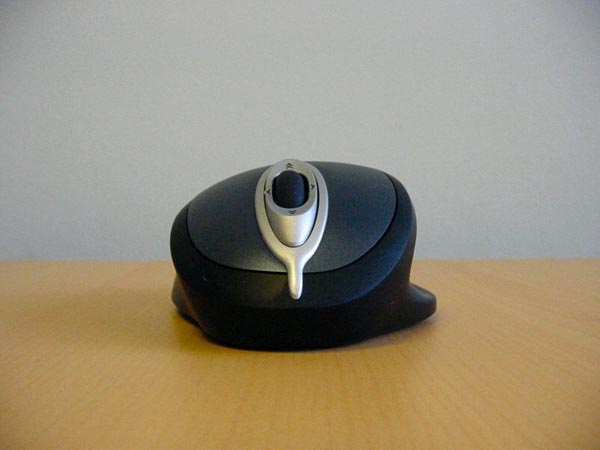Product
We can’t forget the mouse itself, a sculptured shape of shiny and rubberised plastic; it’s a greatly improved design over the older MX700; it has a much more clinical appearance, and the minute you put it next to a MX700 it shows just how dated that design already looks.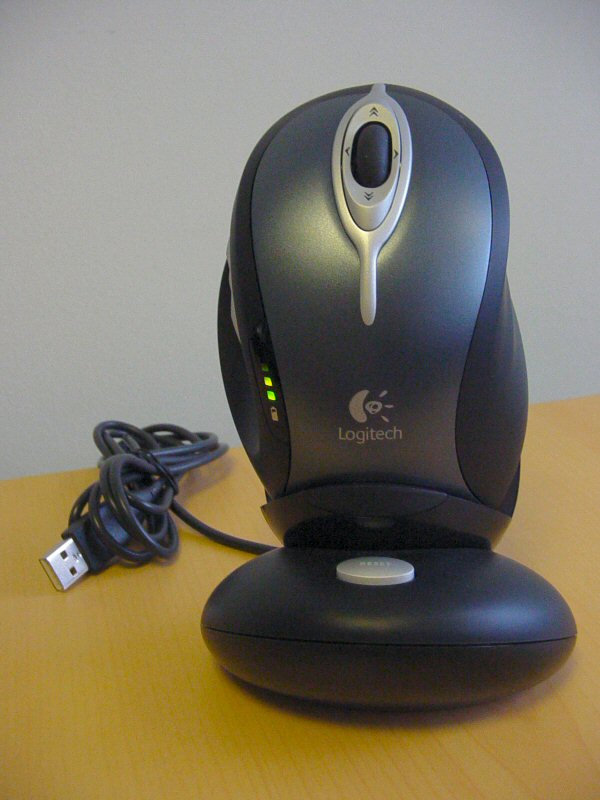
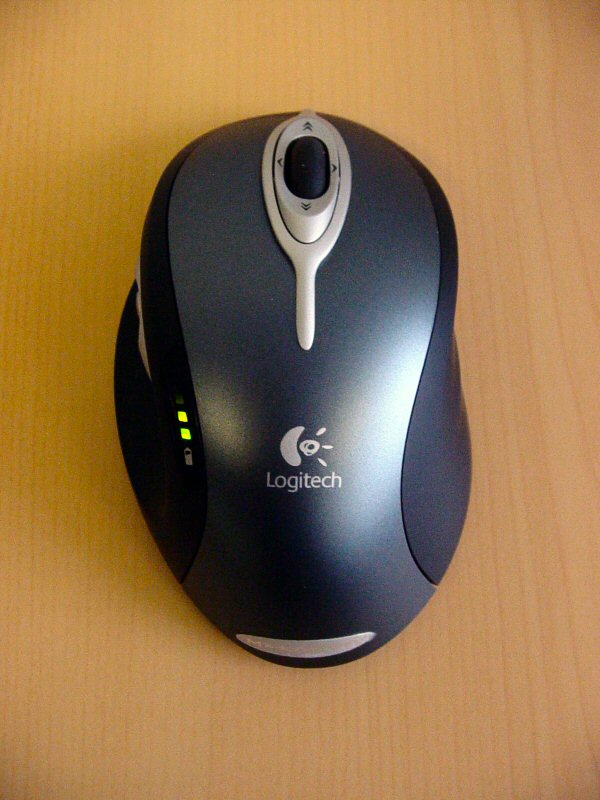
There were many issues with the old MX700 that have been resolved with the introduction of its bigger brother. The MX1000 packs a visual ‘4 level’ battery meter, so there’s no more excuse when you get half way through a game of Half-Life 2 and curse the mouse as the low-battery indicator flashes in your face. Talking of batteries, the MX700 shipped with a pack of replaceable Nickel Metal Hydride (Ni-MH) batteries, rechargeable of course. Seemingly disappointingly,the MX1000 on the other hand does not give you the ability to replace its batteries, but then you notice the mouse is not packing something as simplistic as Ni-MH technology.
The MX1000 has an integrated Lithium-Ion battery, the same sort as you find in most new mobile phones and digital cameras, and like these devices, the battery last much longer than the unreliable Ni-MH batteries that came with the MX700.
One of my pet hates about rechargeable mice in the past is when you go away on holiday, a week of bliss is marred by frustration when you return to a mouse that needs charging. With the MX1000, the clever folks at Logitech have solved this problem and a little switch on the underside of the mouse allows you to switch it off thereby saving its charge for when its needed. Also located on the underside of the device is a reset button; this is to be used in tandem with the solitary button on the base-station, should your device lose sync or stop responding for any reason; pressing both these buttons will renew the RF cordless link and your mouse should start working again.
As previously mentioned the mouse also carries a charge indicator on its top, not only does the battery in the MX1000 last days and days, but now you know exactly how much juice it has left. As a result of the Lithium-Ion battery within the body of the mouse, for some people there may be a slight downside, in that the weight of the MX1000, relative to the MX700, has increased. This isn't massive, but tipping the scales at a little over 175 grammes, it's enough to notice.
Perhaps to compensate for this, Logitech has improved the Teflon pads on its underside, and as a result the mouse glides effortlessly over nearly every surface. Coupled with its resolution of 800 DPI and an Image Processing capability of 5.8 megapixels per second, the MX1000 prove itself to be both highly accurate and effective in all the applications we tried it with. Of course, glass and mirrors still cause the mouse to struggle, and even though it works on a number of surfaces, I would still recommend you use a mouse pad to maintain the effectiveness of the device.
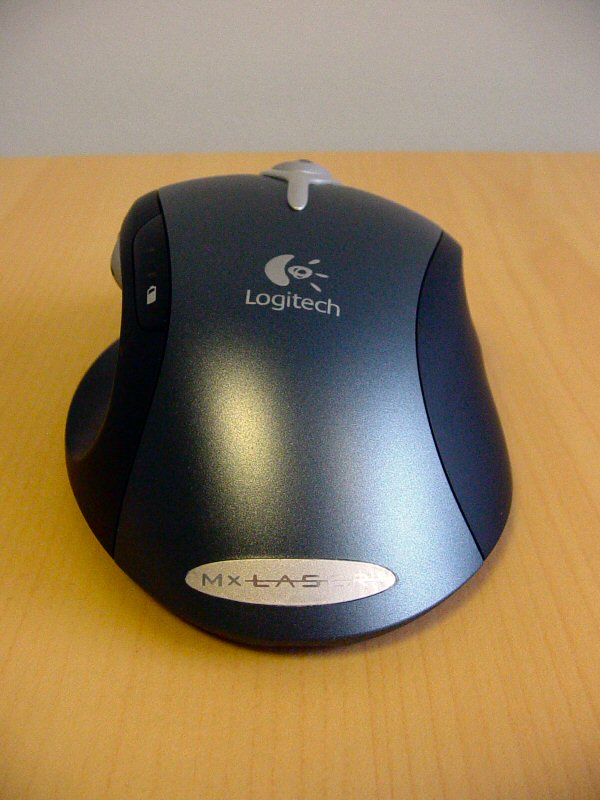
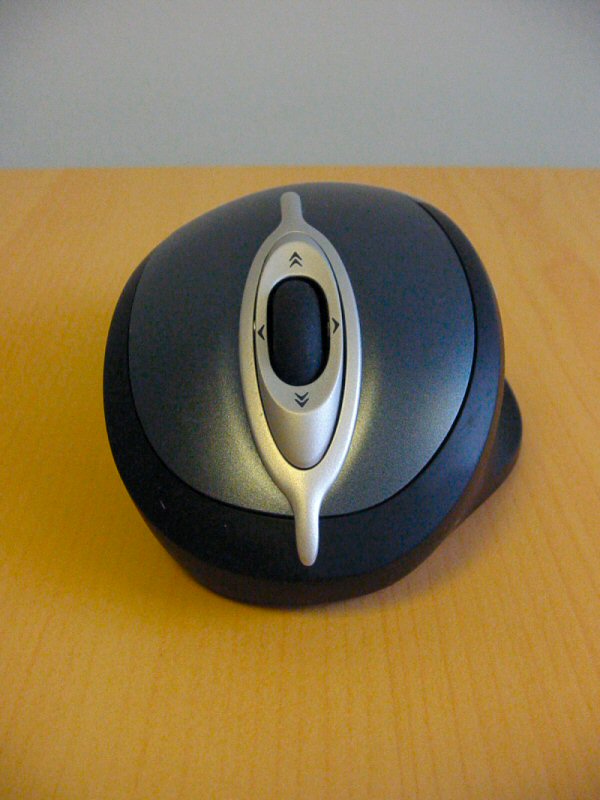
There's just a mass of buttons all over the mouse which first glance, looks slightly complicated, but fear not, everything on the MX1000 serves a useful purpose, for the right-handed it sits very comfortably indeed. You'll notice I specifically referred only to the right-handed amongst us, because i suggest that there's no way a left-handed person could comfortably use this mouse for any considerable time; a shame perhaps, and maybe Logitech should produce a left-handed variant of the MX1000 too.
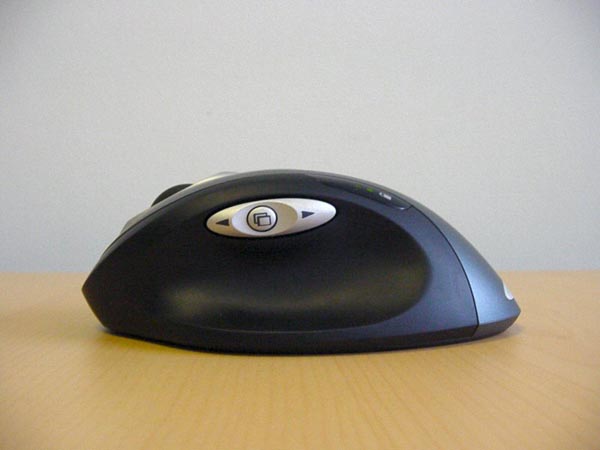

The ergonomics of the Logitech MX1000 are excellent and the buttons are very comfortable to use, each of which has its own reassuringly solid click upon depression. The MX1000 really suits the user profile of an avid gamer, desktop designer and graphics guru. On the left side of the mouse, just above the deep thumb groove, sits the forward and reverse buttons for use whilst browsing. Located in the middle of these buttons is the previously mentioned ‘alt+tab’ button - a useful ‘one click’ solution for switching between applications on the fly.
The right side has no buttons, but has a much more prominent groove that supports the finger well; this is a major improvement over the MX700, but as a potential downside it's increased the footprint of the mouse considerably. The center of the MX1000 really is where it all happens, and this is the location of the rudimentary left and right buttons and the scroll-wheel. Typically a scroll-wheel has three functions, forward, reverse and click, but the MX1000 scroll-wheel deserves special mention, as it packs something different.
The scroll-wheel on the MX1000 is multi-directional, in that not only do you have the usual forward, reverse and click, but in addition to this it also has control over the left and right axis - yes, this wheel ‘leans’ and clicks, giving you the ability to scroll the screen horizontally. Our observation is that this function is presently limited somewhat, as it didn't work in the majority of games we tried, but in productivity applications such as Word and Photoshop, it allows you to navigate the widths of your projects as well as the depths. Either side of the wheel is a slither of silver-coloured plastic, and set inside this are an additional two discrete and comfortable buttons; when using the wheel these buttons allow you to scroll through a set number of lines when using documents or browsing web pages. Holding the button down means you continue to scroll through your document, which is really useful when you literally want to skim through a page.
Using an MX1000 takes a little bit of getting used to, it’s much more sensitive than previous optical alternatives, and the scalability of the device to different applications is what makes every day use possible. Out of the box, any current optical user will notice a difference; it’s a bigger difference than you would think too, given that optical has enjoyed such success in the marketplace for its accuracy and usability. The added weight of the MX1000 means that it might take productivity users and gamers alike a little while to get use to it; though as previously mentioned, the device is made easier to use thanks to its highly effective Teflon pads.

